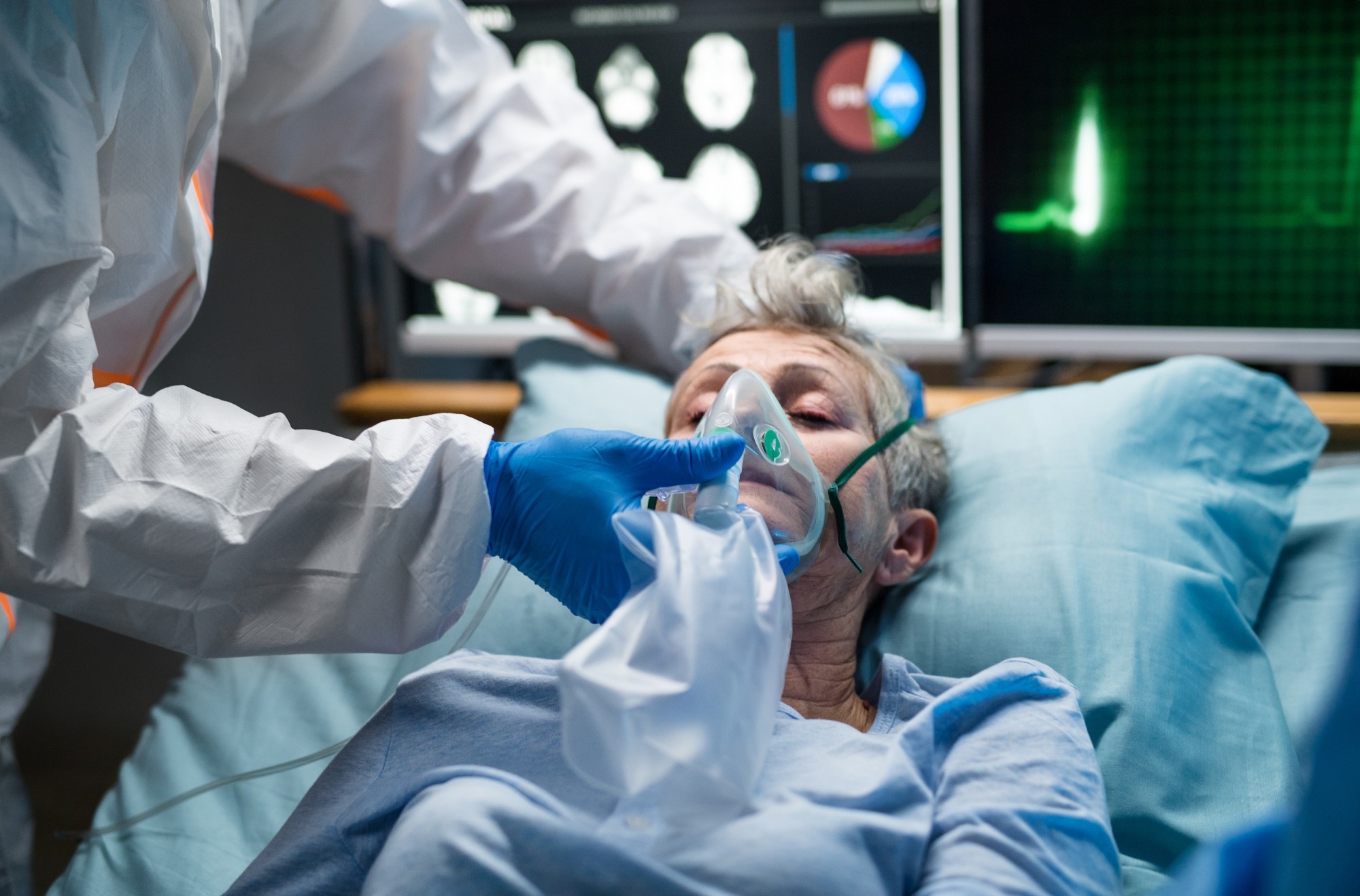In a recent Morbidity and Mortality Weekly Report (MMWR) published on the United States Center for Disease Control and Prevention (US-CDC) website, researchers evaluated whether severe acute respiratory syndrome coronavirus 2 (SARS-CoV-2)-infected immunocompromised individuals are at a higher risk of intensive care unit (ICU) admission and death.
 Study: Factors Associated with Severe Outcomes Among Immunocompromised Adults Hospitalized for COVID-19 — COVID-NET, 10 States, March 2020–February 2022. Image Credit: Halfpoint / Shutterstock
Study: Factors Associated with Severe Outcomes Among Immunocompromised Adults Hospitalized for COVID-19 — COVID-NET, 10 States, March 2020–February 2022. Image Credit: Halfpoint / Shutterstock
Background
Immunocompromised individuals are generally at a higher risk for developing severe coronavirus disease 2019 (COVID-19) and subsequent outcomes, including ICU admission and death. However, there is a lack of population-based studies describing severe outcomes for immunocompromised hospitalized COVID-19 patients.
Immunocompromised patients have one or more predefined immunocompromising conditions, such as acquired immunodeficiency syndrome (AIDS), and a low cluster of differentiation 4 (CD4)+ count. Cancer and solid organ transplant recipients on immunosuppressive therapies are also immunocompromised. Early testing, non-pharmaceutical interventions (NPIs), vaccination, antiviral treatment, and COVID-19 prophylactic use (e.g., Evusheld) all confer additional protection to immunocompromised persons and can prevent subsequent development of serious COVID-19 outcomes.
About the study
In the present study, researchers analyzed the COVID-19–associated hospitalization surveillance network (COVID-NET) data of adults (≥18 years) hospitalized with laboratory-confirmed COVID-19 to assess associations between immunocompromised status and ICU admission and death during hospitalization between March 1, 2020, and February 28, 2022.
The study population had both vaccinated and unvaccinated hospitalized patients. A vaccinated patient either received a two-dose or a single-dose COVID-19 vaccine with or without a booster shot ≥14 days before contracting laboratory-confirmed COVID-19. The team did not analyze vaccinated patients with booster doses separately. An unvaccinated patient had not received a COVID-19 vaccination before the positive SARS-CoV-2 test result.
Across 99 counties in 14 US states, COVID-NET, a CDC-funded collaboration, conducts population-based surveillance of COVID-19–associated hospitalization. COVID-NET defines a COVID-19 case based on a positive reverse transcription-polymerase chain reaction (RT-PCR) result within 14 days prior to or during hospitalization, given individual lives in the COVID-NET catchment area. The researchers used Pearson's chi-square tests to compare the variations between non-immunocompromised and immunocompromised cases. They also evaluated each participant's demographic and clinical characteristics.
Further, the researchers performed bivariate and multivariable analyses in separate models. The multivariable analyses adjusted for age and gender; additionally, the study model adjusted for the predominant periods of variants, site, and other factors with a p<0.10 in bivariate analyses. They used SAS version 9.4 for all statistical analyses accounting for sampling weights. To this end, the researchers set statistical significance at alpha=0.05. All the activities of the current review were as per the federal law and CDC policy.
Study findings
During the study period, 24,625 samples, of which 11% were unweighted, had a thorough chart review, including 22,345 samples, 90.7% of which were unweighted, that met the study inclusion criteria. Of these, 12.2% were immunocompromised and 11.1%, 10.9%, and 17.3% were hospitalized during the pre-Delta, Delta, and Omicron predominance era, respectively.
It was more likely for immunocompromised patients to be non-Hispanic White and older. Also, they had a substantially higher incidence of all pre-existing health conditions except neurological diseases and diabetes. Among unvaccinated immunocompromised patients, ICU admission and death odds were higher with an adjusted odds ratio (aORs) of 1.26 and 1.34. Likewise, among vaccinated immunocompromised patients, ICU admission and death odds were higher, with aORs of 1.40 and 1.87. As expected, non-immunocompromised vaccinated patients had lower odds of death (aOR = 0.58) than their unvaccinated counterparts. Likewise, non-immunocompromised patients who were vaccinated had lower odds of death than unvaccinated patients.
Furthermore, among patients with a particular immunocompromising condition (e.g., AIDS), the odds of death during hospitalization were even higher, resulting in aORs of 2.03. However, irrespective of immune status, the odds of death during hospitalization were higher for those on immunosuppressive therapy, having multiple myeloma, or transplant recipients. Conversely, odds of death during or following hospitalization were lower for patients with immunoglobulin deficiency.
The pre-dominance era of a SARS-CoV-2 variant also altered the severe outcomes, such as death. For instance, during the prior to Delta and Delta–dominated periods, immunocompromised patients typically had a higher probability of death, regardless of vaccination status. However, during the Omicron-dominated era, odds of death were not statistically different regardless of vaccination or immune status.
Conclusions
Overall, the current study had several key findings. First, immunocompromised adults were overrepresented (12.2% in COVID-NET) among hospitalized COVID-19 patients in the US. Before a hospitalization, COVID-19 vaccination was highly protective for immunocompromised individuals and conferred protection against COVID-19–related hospitalization. However, vaccination status did not correlate with ICU admission or death following hospitalization among immunocompromised patients.
Once hospitalized, immunocompromised patients with COVID-19 had increased odds of ICU admission or death. However, it could also be because immunocompromised status is likely associated with severe outcomes. Notably, during Omicron's predominant period, the odds of death reduced for all patients, probably due to the lower fraction of severe consequences associated with Omicron. Unfortunately, the researchers could not further stratify the attenuation of effects following booster shots.